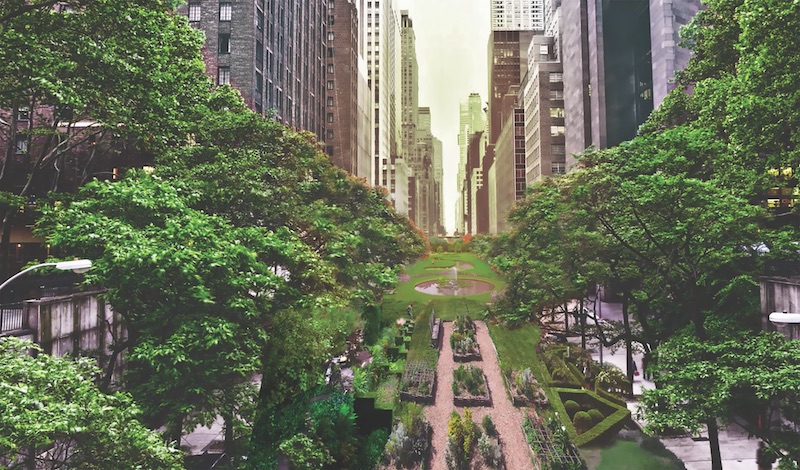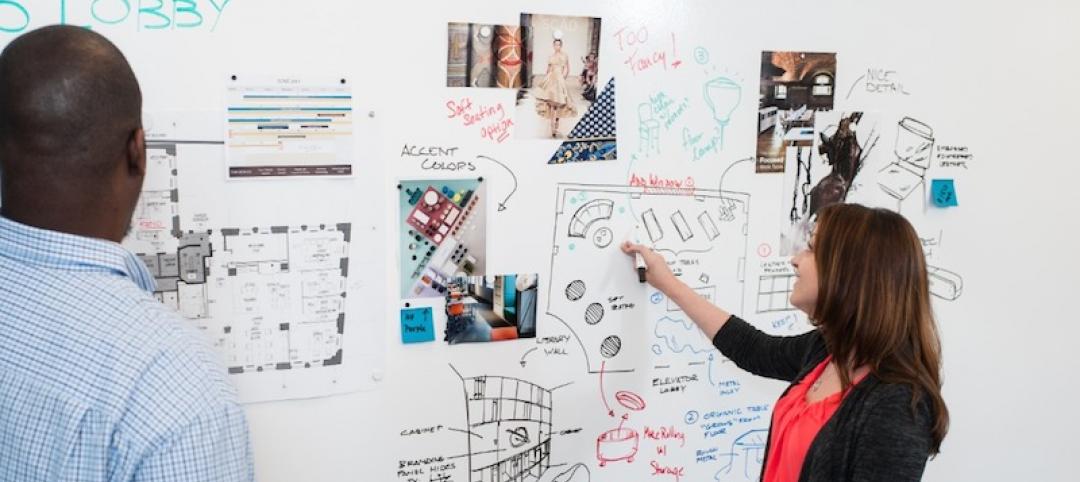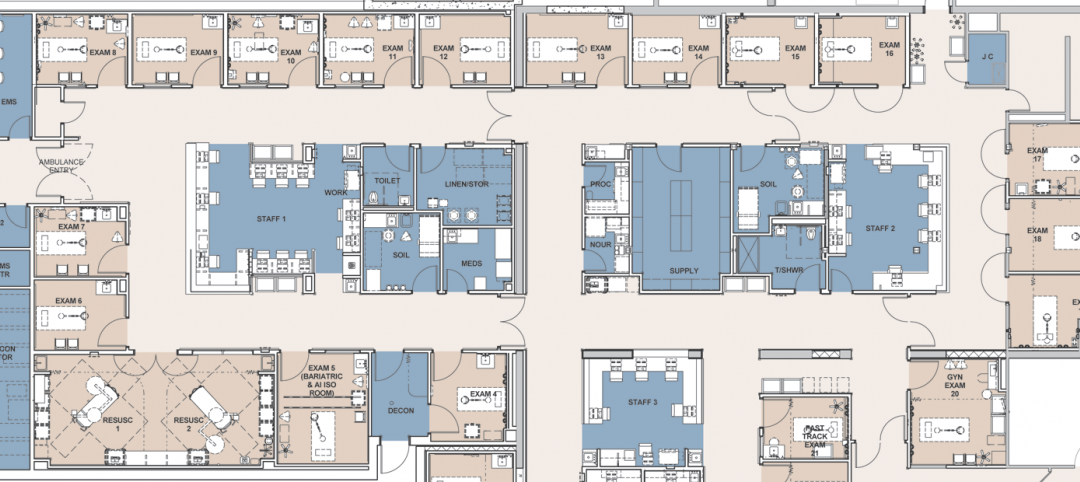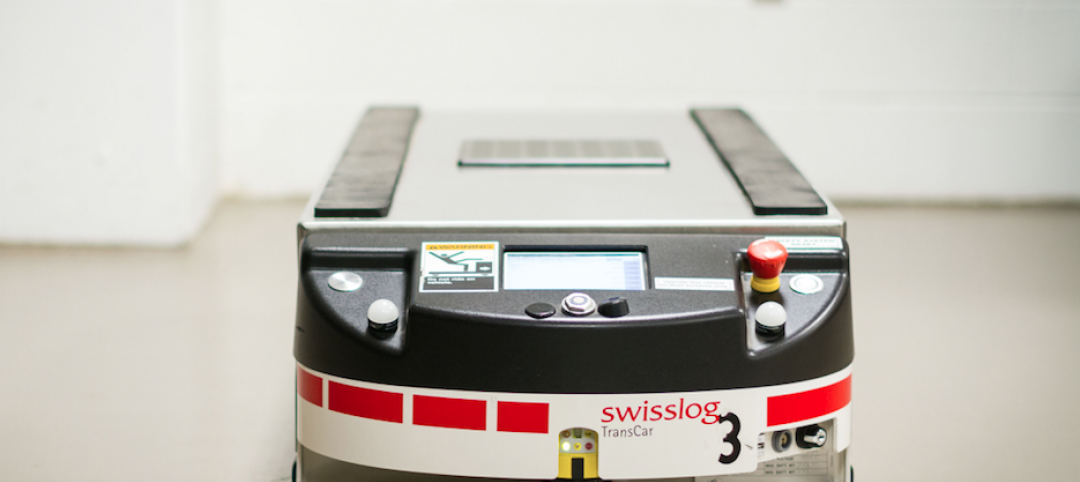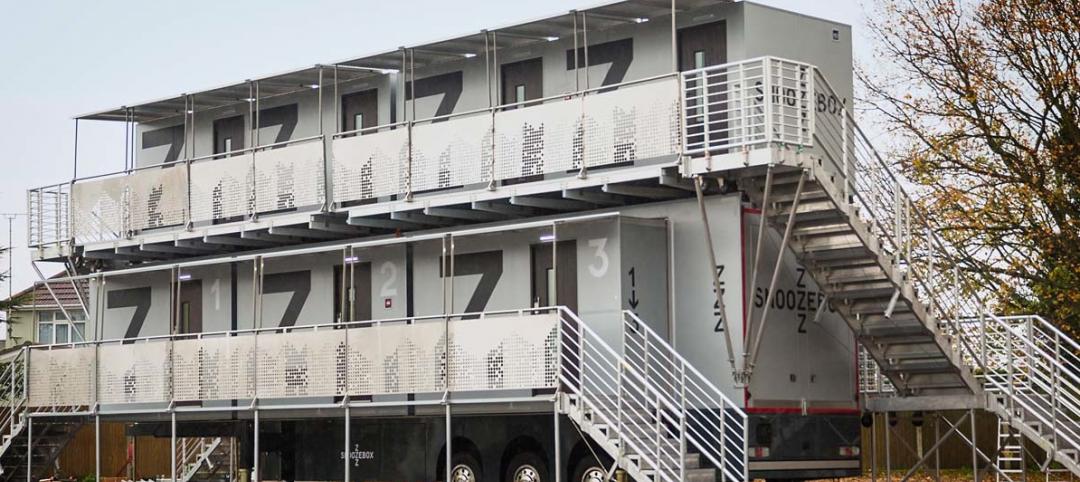What was once a busy thoroughfare filled with exhaust fumes and the sounds of honking horns becomes a quiet strip of land, its oil-stained concrete reclaimed by nature and the angry honks of traffic relegated to the past. This reclamation of New York’s streets may seem like a post-apocalyptic vision in a dystopian summer blockbuster, but it’s actually a radical new proposal from New York-based Edg, an architecture, engineering, and consulting firm, that would bring 24 miles of park space to New York City’s street grid.
Loop NYC leans heavily on driverless cars to create a new traffic flow around Manhattan. Existing cross streets and highways are converted into driverless expressways to optimize traffic flow in and out of the city.
The FDR and West Side highways will have one lane of traffic in each direction designated for autonomous vehicles. These highways will connect to major Manhattan streets, which themselves will be transformed into driverless car expressways. Featuring driverless vehicles exclusively would be 14th Street, 23rd Street, 34th Street, 42nd Street, 57th Street, 86th Street, and 110th Street. Pedestrian overpasses and underpasses will be installed around these streets to physically separate the vehicles and the pedestrians.
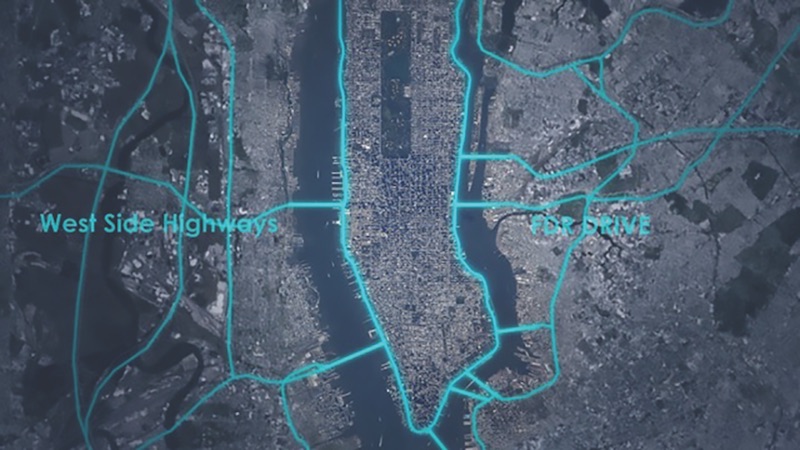 Courtesy Edg.
Courtesy Edg.
The driverless cars can circulate using any combination of the new expressways and loops to expedite travel. Edg calculated the efficiency of Loop NYC to go from Grand Central Station to Lower Manhattan and back. This route would traditionally take about 40 minutes. With the Loop NYC plan in place it would only take 11 minutes.
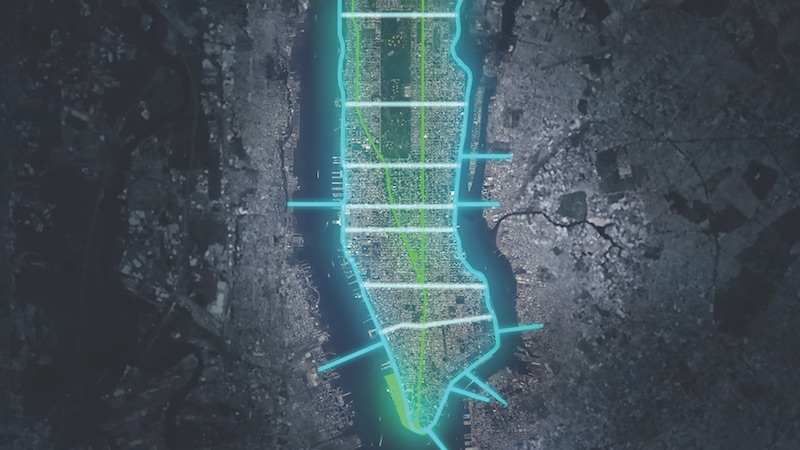 The proposal would designate some of New York’s busiest and widest streets to be used exclusively by driverless cars, significantly reducing travel times. Other streets, such as Broadway and Park Avenue, would eliminate cars completely and instead become pedestrian-friendly gardens, parks, and green space. Courtesy Edg.
The proposal would designate some of New York’s busiest and widest streets to be used exclusively by driverless cars, significantly reducing travel times. Other streets, such as Broadway and Park Avenue, would eliminate cars completely and instead become pedestrian-friendly gardens, parks, and green space. Courtesy Edg.
With the more efficient traffic flow, once congested streets could be reclaimed as park space with walking paths and bike lanes. A 13-mile-long pedestrian park would stretch from Battery Park in Lower Manhattan, run through Union Square, and then continue north on Broadway and Park Avenue. Broadway will become its own linear park filled with pathways and pedestrian bridges meant to mimic natural rolling hills.
The proposal builds on a current theme found in cities around the world to become greener, more pedestrian-friendly, and less reliant on cars. However, Loop NYC remains highly speculative for several reasons. Chief among them is the fact that a world of truly autonomous cars is still years away.
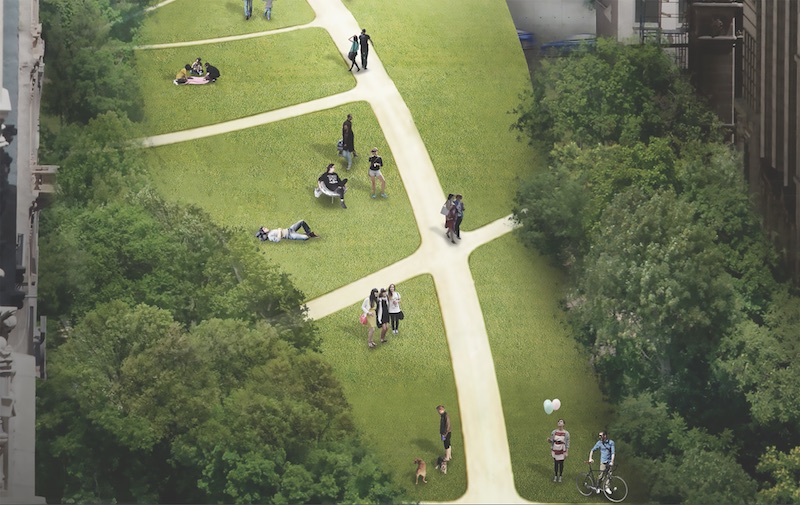 Courtesy Edg.
Courtesy Edg.
Related Stories
Great Solutions | Jan 7, 2016
Bacteria-killing paint and magnetic wallcovering highlight innovations in surface materials
Sherwin-Williams recently introduced Paint Shield, the first EPA-registered microbicidal paint that kills virtually all infection-causing bacteria after two hours of exposure on painted surfaces.
Great Solutions | Jan 6, 2016
Shepley Bulfinch develops elegant design solution to address behavioral issues in emergency departments
ED scheme allows staff to isolate unruly patients and visitors in a secure area.
Great Solutions | Jan 6, 2016
All-encompassing farming kit can provide communities with a sustainable food supply
Several manufacturers partnered with the group Farm from a Box to develop an off-the-grid farming solution for communities, all without the need for outside help.
Great Solutions | Jan 4, 2016
Toronto’s newest hospital employs 10 robots for moving food, supplies, and equipment
The 1.8 million-sf Humber River Hospital is loaded with high-tech gadgets. Its coolest innovation is the use of automated guided vehicles.
Great Solutions | Jan 4, 2016
Snoozebox’s portable hotel rooms make outside events more livable
Since 2011, the London-based company has thrived by creating portable hotels that are set up for the duration of open-air events (or longer), and offer many of the comforts of conventional hotels.


